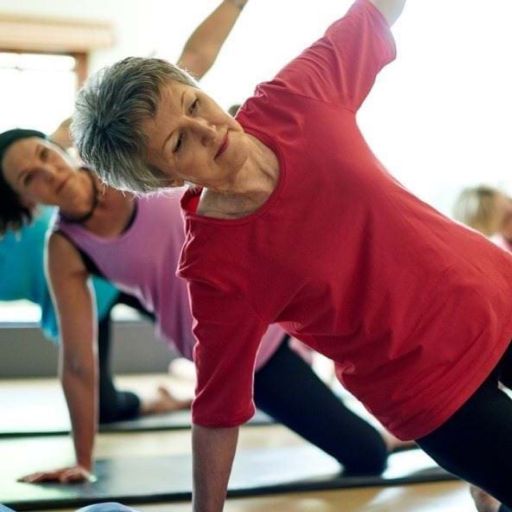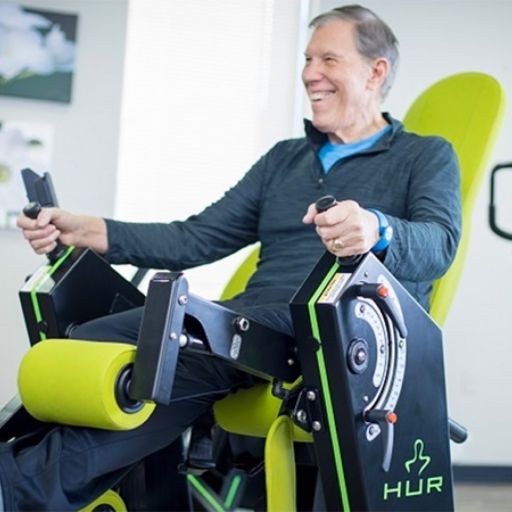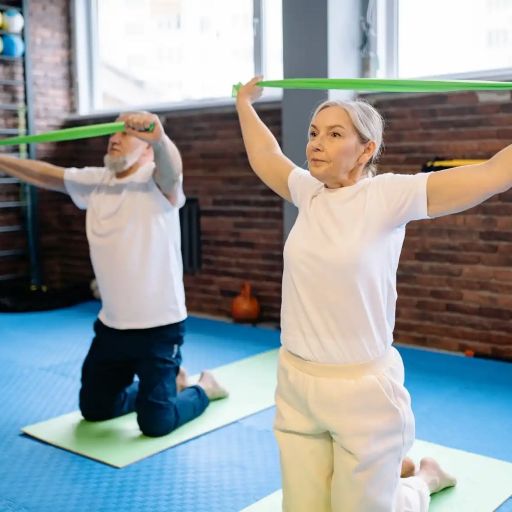What You Need to Know About Secured Credit Card Deposits!
Insuring Your Peace of Mind: An Overview of Common Types of Insurance.
About Balance Transfer Basics!
Unveiling the Truth: Debunking Home Insurance Myths.
What to do When Your Auto Insurance Claim is Denied?
What do you Know About Credit Scores!
As seniors grow older, maintaining health and fitness becomes a priority. It’s a well-known fact that regular exercise helps decrease the chances of chronic diseases and preserve mental wellness. It also enhances self-sufficiency in a huge way.
However, choosing the appropriate gym class or gym equipment can be a challenge for the normal senior.
With a huge number of classes and facilities to choose from, it is not easy to pick just one. Let’s dig deeper into how seniors can select an appropriate gym class and the right equipment for maintaining their fitness.
Understanding personal fitness goals
When it comes to fitness, seniors get to set their own game plan. Everyone’s needs are different, but common goals for older adults include building strength, improving flexibility, boosting endurance, enhancing balance, and managing weight.
First up, strength training. It’s like adding extra life to your muscles, making daily tasks feel like a breeze. Flexibility exercises? They’ll keep you bending and stretching without risking injury.
Cardiovascular exercises are your heart’s best friend, keeping you energized and going strong. Balance exercises are a must—because who wants to worry about falls? And let’s not forget, staying active is the ultimate key to maintaining a healthy weight.

Choosing the right gym classes/activities
With fitness goals in mind, seniors can start exploring gym classes that match their objectives. Here are some popular class types that are great for seniors.
●Strength training classes
Try to look for classes that are offered specifically to seniors or those that specialize in low-impact strength training. These classes often use resistance bands, light weights, and bodyweight exercises.
They enhance muscle strength safely. Instructors should be knowledgeable about senior fitness and able to provide modifications for different ability levels.
●Yoga and pilates
Yoga and pilates have been designed for flexibility, balance, and core strength development. These classes are purposely designed for the elderly population and are available in most health clubs. Such lessons can help seniors alleviate joint pain, correct poor posture, and maintain overall health.
●Water aerobics
Water aerobics classes are excellent for seniors because the buoyancy of water reduces the risk of injury. These classes provide a full-body workout, improving cardiovascular fitness and muscle strength without the strain of traditional exercises.
●Tai Chi
Tai Chi is a low-impact martial art that emphasizes slow, controlled movements and balance. It is particularly beneficial for seniors, as it improves stability, reduces stress, and enhances overall well-being. Look for classes specifically designed for older adults.
●Group exercise classes
Many gyms provide general group exercise classes and special sessions that are safe for older people. Look for classes that come with labels such as "gentle," "beginner,” or “senior friendly." They tend to provide lower-intensity workouts targeting endurance, flexibility, and strength.
●Chair exercises
Chair exercises are mostly useful for old people who can’t stand for long periods of time at one and are suffering from low mobility. They consist of seated exercises designed to sculpt muscle tone and help cardio-vascular health.

●Dance classes
Contrary to popular belief, dance classes can be ideal for seniors as an exercise session. Dance classes such as Zumba Gold or line dancing are also great classes for the elderly, as they help with heart fitness as they enjoy the music and socialize.
Most of these classes are also low-impact and can easily be modified to cater for most levels of fitness.
●Class safety and accessibility
When picking gym classes, safety and accessibility should be your top concerns.
Here’s what to keep an eye on:
●Instructor qualifications
Check out the instructors' credentials. They should have certifications in senior fitness or similar areas. This way, you know they understand the unique needs of older adults.
●Class size
Smaller classes are your friends. They offer more personalized attention and modifications. In big classes, instructors might miss the chance to give you the adjustments you need.
●Facility accessibility
Make sure the gym is easy to navigate. Look for ramps, elevators, and handrails. The workout space should be clear of obstacles to help prevent falls.
●Emergency procedures
Ask about the gym's emergency plans. Are there staff members trained in first aid and CPR? Knowing help is just a shout away can really ease your mind.

Choosing the right gym equipment
In addition to picking the right equipment, selecting the right equipment in terms of fitness is another reason. The following are some of the relevant details to take into account.
●Seek the guidance of an expert: Before trying out any gym equipment, seniors must seek the guidance of a fitness expert or certified trainer. They can teach how the equipment should be used in order to avoid injuries and/or inappropriate or excessive use of the machine.
●Use Low Impact Aerobic Equipment: Low impact equipment is less strenuous on seniors. Some of them include:
●Stationary Bikes: A stationary bike is a type of exercise machine that a person sits on. It uses turns foot pedals to improve cardiovascular fitness, but in a low-impact fashion.
●Elliptical Machines: These machines provide total body workouts and are easy on the knees and joints.
●Resistance Bands: These are resistance training products used for strength training without bulky weights.
●Dumbbells: Light dumbbells can enhance strength training while allowing for flexibility in weight selection.
●Adjustable Equipment: When selecting gym equipment, look for adjustable options that allow users to modify resistance levels, seat height, and other settings. This adaptability helps ensure that seniors can use the equipment comfortably and safely.
Aging individuals who wish to maintain fitness should opt for gym classes or equipment that is within their capabilities and objectives. Whether it’s a weightlifting class or one focused on improving your flexibility, there’s something for everyone.
Safety should be your top priority. Opt for small, cozy groups led by pro trainers. After all, nothing says “fitness goals” like lifting weights without risking a trip to the ER!
As for the forms of exercise, stationary bicycles and resistance bands are preferable for low-impact activities. With the right choices, seniors are able to withstand and perform enjoyable activities that promote mobility and independence.

Massachusetts Travel Guide: Everything You Need to Know!

Traveling Along American Riverbanks: Grand River, Red River

From Beginner Backpacker to Backcountry Boss: The Essential Camping Gear Checklist

Gear Up and Go: Your Beginner's Guide to Finding the Perfect Bicycle